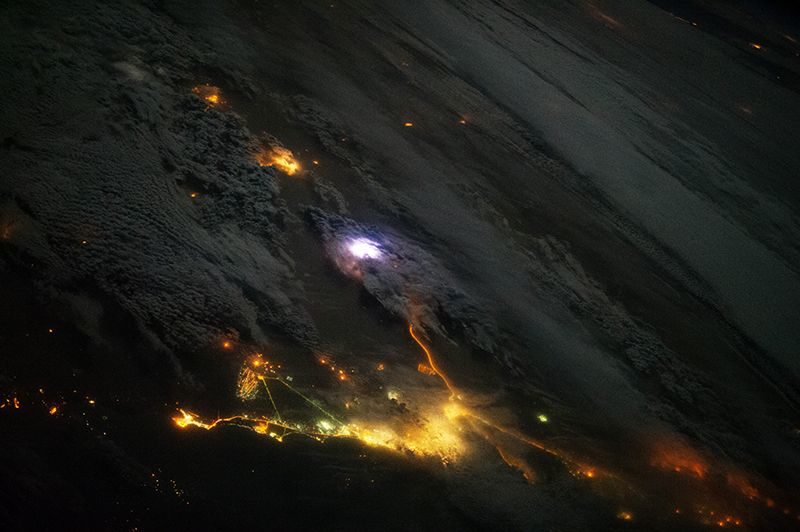
The researchers have found that the bursts, known as terrestrial gamma-ray flashes (TGFs), form when powerful electric fields course through the atmosphere, just before a lightning bolt travels along the same path. The charged electrical particles interact with the atmosphere to produce a super-fast flickering of gamma rays, which cannot be seen by the naked eye but are visible to the specialized cameras looking down from the space station.
The instruments have provided the best look yet at the relationship between ordinary lightning and TGFs, which scientists have known about since 1994 but have not been able to explain. "This is a game changer," says Nikolai Østgaard, a space physicist at the University of Bergen in Norway. He described the findings in a pair of talks at the International Union of Geodesy and Geophysics meeting in Montreal, Canada, on 9 and 12 July.
This insight into how TGFs form comes from the Atmosphere-Space Interactions Monitor (ASIM), a box-shaped set of cameras and sensors built by several European universities and companies and led by the Technical University of Denmark near Copenhagen. ASIM launched to the space station in April 2018. Unlike other missions that study atmospheric electricity, it was designed to study ordinary lightning and TGFs in extraordinary detail at the same time.
Flashes of insight
During its first 10 months of gathering data, ASIM spotted 94 occasions when TGFs and lightning happened very close to one another. More than half followed the same sequence: a weak pulse of light appeared, perhaps after electrically charged particles started moving along a conductive channel in the thunderstorm. Then the TGF burst, spewing gamma rays everywhere. Within a few hundred microseconds, a huge pulse of electric current flowed along that same electrically charged path, making lightning.
The data support the theory that there needs to be a small but strong electric field at the tip of the conductive channel to make a TGF, Østgaard says. Some competing theories had suggested that TGFs form when a thunderstorm builds up a strong, but much larger, electric field in the clouds. "Our results really put a lot of support to the former idea," Østgaard says. "We have solved the question."
The new data are "inspiring", says David Smith, a space physicist at the University of California, Santa Cruz. Joseph Dwyer, a space physicist at the University of New Hampshire in Durham, hopes the observations "will point us in the right direction" to figuring out how TGFs arise.
The ASIM researchers still need to check how its observations compare to other measurements of the same storms, and to see if the relationship it found between TGFs and lightning holds up as it sees more and more of them.
Storm chasers
ASIM is expected to keep working for at least another two years. The team hopes to see many more TGFs during that time. "It's like being out fishing, and you just have to wait for the big fish," says Østgaard.
He and his colleagues might even try to get a closer view of these thunderstorm puzzles. ASIM looks down from an altitude of about 400 kilometres above Earth's surface, and the TGFs occur between about 11 and 13 kilometres above the surface. Østgaard and others are hoping to view the TGFs at close range from an aeroplane flying just above the thunderstorms carrying gamma-ray detectors.
Those research flights could happen as early as 2021 — and provide yet another view of the mystery flashes.
doi: 10.1038/d41586-019-02181-8



Comment: See also: